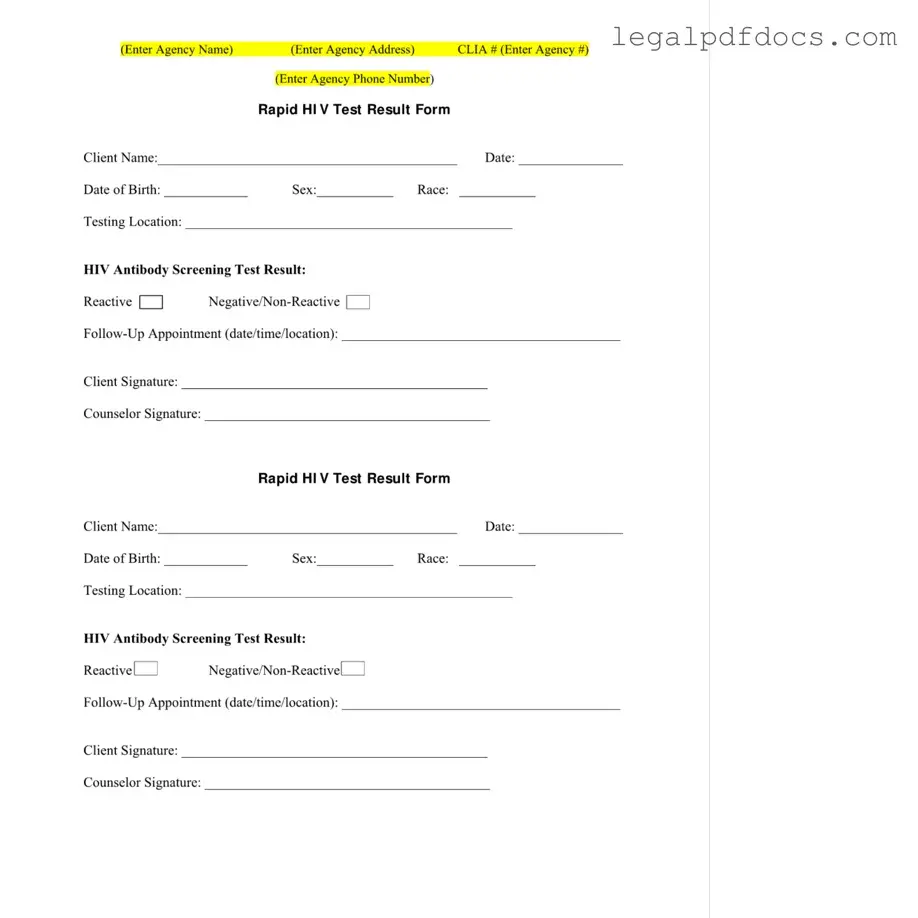The Negative HIV Test form serves as a crucial document in the process of HIV testing, providing essential information about the individual tested and the results obtained. It includes fields for the client's name, date of birth, race, and testing location, ensuring that all pertinent details are accurately recorded. The form clearly indicates the HIV antibody screening test result, categorizing it as either reactive or negative/non-reactive. In addition, it outlines the need for a follow-up appointment, allowing clients to stay informed and engaged in their health care. Signatures from both the client and the counselor affirm the authenticity of the results and the testing process. Furthermore, the form incorporates temperature logs for the storage of rapid HIV test devices and controls, which are vital for maintaining the integrity of the tests. These logs ensure that the tests are stored within acceptable temperature ranges, thereby enhancing the reliability of the results. Overall, the Negative HIV Test form is designed to provide a comprehensive overview of the testing process, promoting transparency and accountability in HIV testing services.
